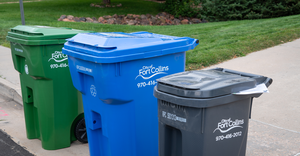Breaking It Down: The Chemical Recycling/Mass Balance Debate
Proponents say mass balance negates the need to duplicate billions of dollars’ worth of infrastructure to keep recycled and virgin materials separate throughout the value chain, thus enabling scale up. Opponents say making recycled claims on what can’t be physically traced is misleading.

Governments are starting to set recycled plastic content targets, and brands fixed on staying ahead of regulations are voluntarily committing to use certain percentages of recycled material in their packaging. These emerging mandates and pledges beg the question: how do you measure and verify recycled content?
What the best approach is has been a subject of contention, especially when it comes to vetting chemically recycled plastic. Tracing recycled feedstock gets tricky as it passes through a highly complex supply chain.
At the front end, plastic is typically converted to pyrolysis oil—the stuff that recycled plastics, fuels, and other products are made from. Pyrolysis oil moves on to a refinery where it’s blended with virgin feedstock, then heads out to be made into multiple commodities. It becomes impossible to distinguish recycled from virgin molecules, much less know how much recycled versus virgin petro ends up in which product.
So, the plastics industry leverages a method called mass balance to document chain of custody and to verify output as “recycled” when recycled and virgin materials are mixed. Processors get credits per ton of pyrolysis oil they produce, and brands can make sustainability claims on what they buy that came out of the system.
While this accounting approach can’t verify how much, if any recycled content went into an end product, it can confirm that all recycled feedstock that entered the system (minus calculated losses) moved through the entire production process.
So, in essence, this accounting method is about “balancing the mass” as a whole.
Proponents say mass balance negates the need to duplicate billions of dollars’ worth of infrastructure to keep recycled and virgin materials separate throughout the value chain, thus enabling scale up. And leveraging mass balance to allocate credits will stimulate investments in plastics recycling, they contend.
Opponents say making recycled claims on what can’t be physically traced is misleading. And they argue that allowing mass balance to make these claims will not help advance circular plastics due to technical limitations in chemical recycling.
“Given the amount of virgin material that must be blended with recycled material [about 98 percent], as well as process losses that occur during production, chemically recycled plastic will never substantially displace virgin plastic. I think mass balance is a deceptive way to present recycled content to consumers. It can lead to the false belief that chemical recycling is an effective recycling solution for plastics,” says Jennifer Congdon, deputy director of Beyond Plastics.
But mass balance is not typically used to make consumer-facing claims about recycled content in end products, points out Laura Thompson, a technical advisor to GreenBlue. The nonprofit created a standard around mass balance called RMS.
“Some [programs] say it’s ok. But the rules of GreenBlue’s RMS standard do not allow claims on percentages of recycled content, nor do most standards,” Thompson says.
It’s simply a method to assign credits to recyclers for their investment and a means for brands to show they are sourcing recycled materials.
“You can prove how much you took in and processed. And you get credits, which is a mathematical representation of recycled materials in your facility,” Thompson says.
A credit claim, based on a calculation of recycled output, now represents the attribute of “recycled.”
“I can’t point to a batch and say there is 10 percent. But we know recycled material went in and came out.”
“Why would chemical companies put recycled content in the front if they aren’t recognized for it coming out the back? And why would brands pay a premium for what they can’t claim?” asks Thompson.
While brands have no way of knowing how much went into a given product, they leverage mass balance to determine if they met recycled content targets, companywide, by averaging the calculated “recycled” feedstock they bought across products.
NGO’s skeptical about what they call “creative accounting” point to a few corporations, like Eastman Chemical and Mondelēz, who have claimed recycled content percentages on specific products or packaging based on mass balance.
Lee Bell, technical and policy advisor for IPEN, brings up another concern: depending on which products derived from pyrolysis oil get recycling credits, mass balance could work against plastics recyclers who use other technologies.
“There was a bit of a fight in the E.U. among different groups of recyclers. The concern was pyrolysis operators could get credit allocations they should not get for co-products that are not turned into plastics. And mechanical and other recyclers would not have a level playing field,” Bell says.
That is where the debate really heats up: determining which products and co-products get credits.
There are three main methods, from those that assign credits liberally to stricter models.
The most lax is “free allocation.” That’s what chemical companies want, says Simon Hann, managing consultant at Eunomia Research & Consulting.
“This approach allows the freedom to allocate credit to whatever product they want. Then there is “fuel exempt,” which says you can allocate credits to anything except fuels (e.g., petro chemicals that may not go into plastics as well as monomers for plastics get credits), which may be 30 percent of what comes out of the steam cracker. And there is “polymers only,” where you can allocate only to what will go to polymers [primarily ethylene or propylene], which is about another 30 or 40 percent,” Hann says.
The debate lately is centered around whether fuel should count as “recycled material”— at least in the U.S. In Europe, fuel is not under consideration.
“This is where a lot of skepticism around free allocation comes in. Some organizations are calling for mass balance claims to be adjusted to ensure no credits are passed to fuel,” Thompson says.
The E.U. has been in deep conversations over which credit allocation system to rubber stamp, and all eyes are on their deliberation as Europe will influence the chosen standard in most countries, policy experts project.
“The ultimate decision will soon go to a vote by member states. But it looks like Europe will go with fuel exempt. France and Germany were originally going with the stricter polymer-only approach and have a lot of influence due to their size. They changed their opinion, which pushed favoritism toward the decision to not count fuel,” Hann says.
International Sustainability and Carbon Certification (ISCC) is a third-party organization that certifies against its own standard, guided by the industry who uses those standards.
ISCC offers free allocation and recently added fuel exempt. The decision to offer both options was driven by global multi-stakeholder dialogue and regulatory developments, such as the Single Use Plastic Directive in the E.U., says Jan Henke, director of ISCC.
The middle-of-the-road fuel exempt option has begun appearing elsewhere, including in GreenBlue’s RMS standard and rules of other parties who anticipate pending limitations in what can be claimed and want to stay ahead of the game.
Returning to the question, how will brands make recycled percentage content claims in coming years? It’s inevitable that they will have to; recycled content mandates are coming. They are on their way across Europe, and several states in the U.S. have set required targets, with California leading the way.
“There are no hard and fast rules around what, and how, you can report on recycled material. This is a problem at the moment because you can say there is a certain percentage of recycled content in a product, and it is hard to say you are wrong in the absence of standardization,” Hann says.
About the Author
You May Also Like




